By Dan Weisz
Swainson’s Hawks are uncommon in southern Arizona in the summers but at this time of year they may be seen in the hundreds on a daily basis as they migrate through to their wintering homes. They can be found in the agricultural areas near Wilcox or those northwest of Marana extending through Eloy. We are unlikely to see them over the Foothills. In the air, they can be distinguished from other hawks by their long wings with pointed wingtips and their relatively small heads. Although the color variation among individuals is significant, all Swainson’s will have a dark “bib” on their breast, creating a hooded appearance.
Recently I drove through the farmlands northwest of Tucson with a friend and was able to see several hundreds of the birds in small groups of about 20-40 each. Many of the photos below are of birds soaring.
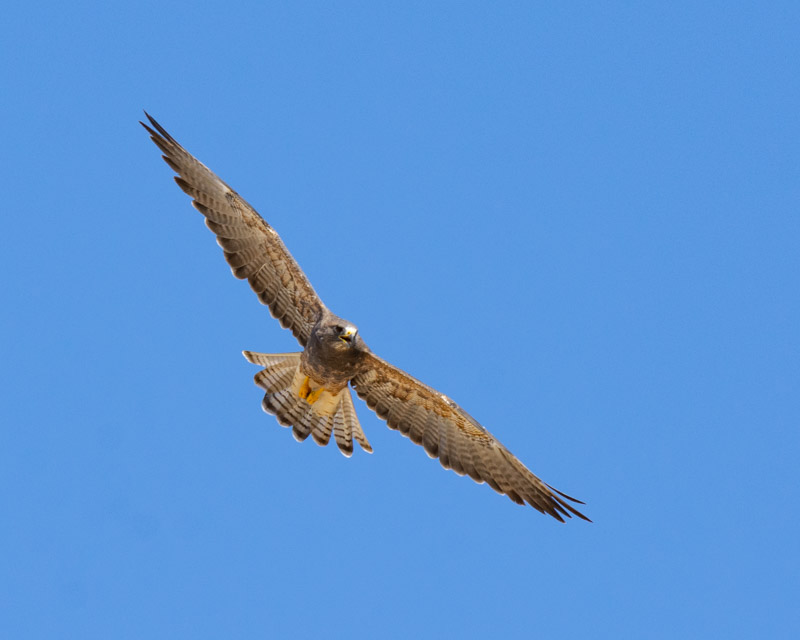
To give you a sense of how far these birds travel, check out the range map below. Orange is their warm weather territory where they live in the Great Plains and open areas of the west during the summer. Yellow is their migration route and blue is their wintering homelands. Of course, during our “winter” it is summer in Argentina where the birds live in the open plains there. The distance of their migration is incredible:
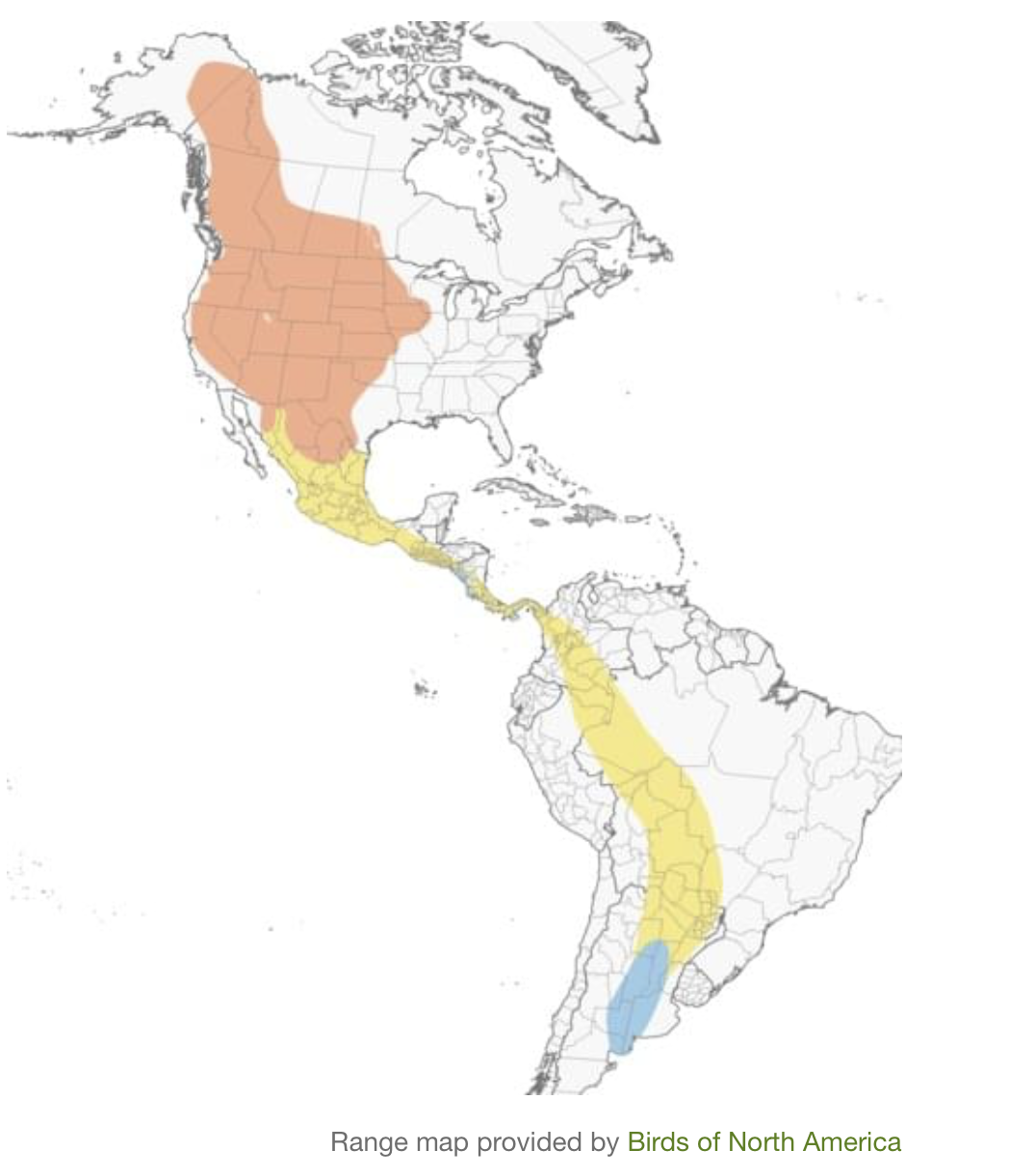
Enjoy the many soaring Swainson’s Hawk photos below.
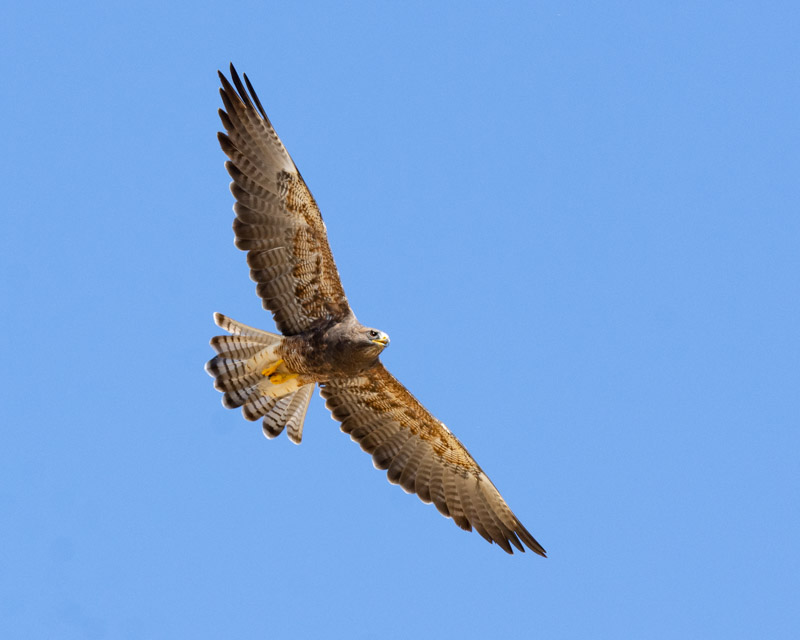
Many of the birds are missing feathers due to molting, as this one is.
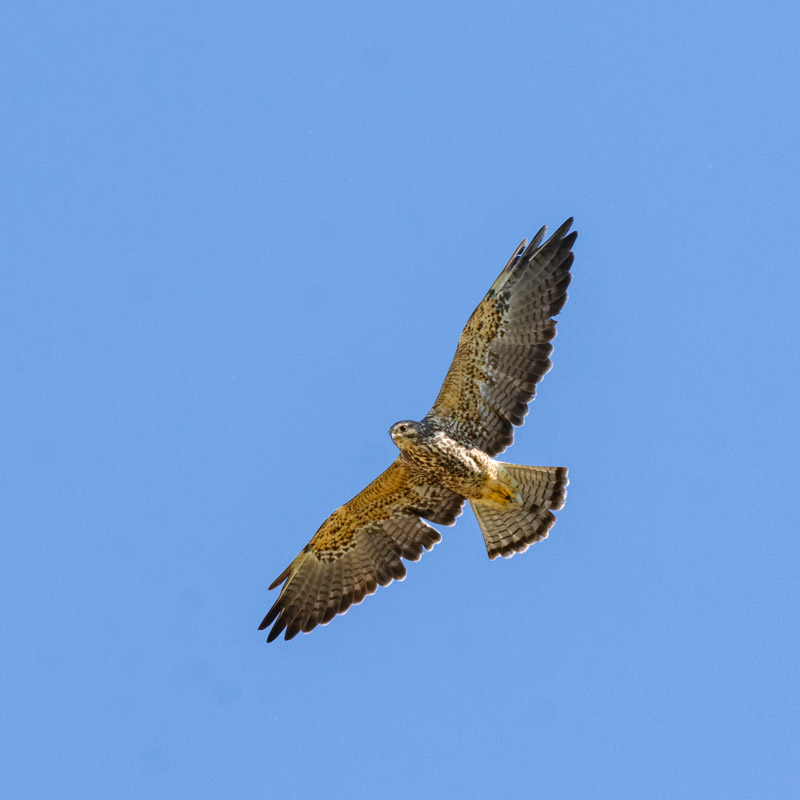
As we drove, we would see the birds either in fields or lifting off from trees that lined the road as we passed by. The birds would find a nearby thermal and use that heated air as an elevator to lift them up into the sky. Forming large “kettles”, the birds would then circulate. Those thermals were used by other large soaring birds like the vulture above the Swainson’s Hawk in the next shot.
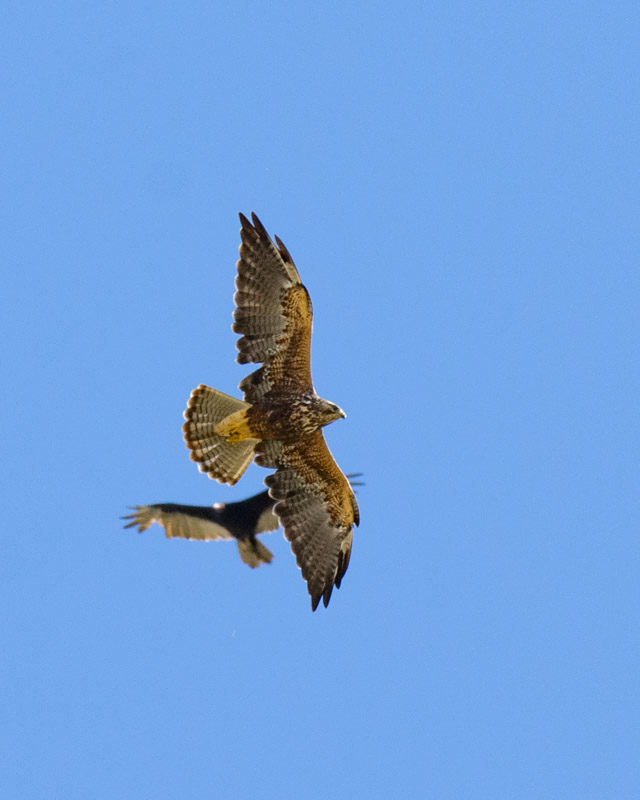
And this Swainson’s is flying under another one who is missing many feathers.
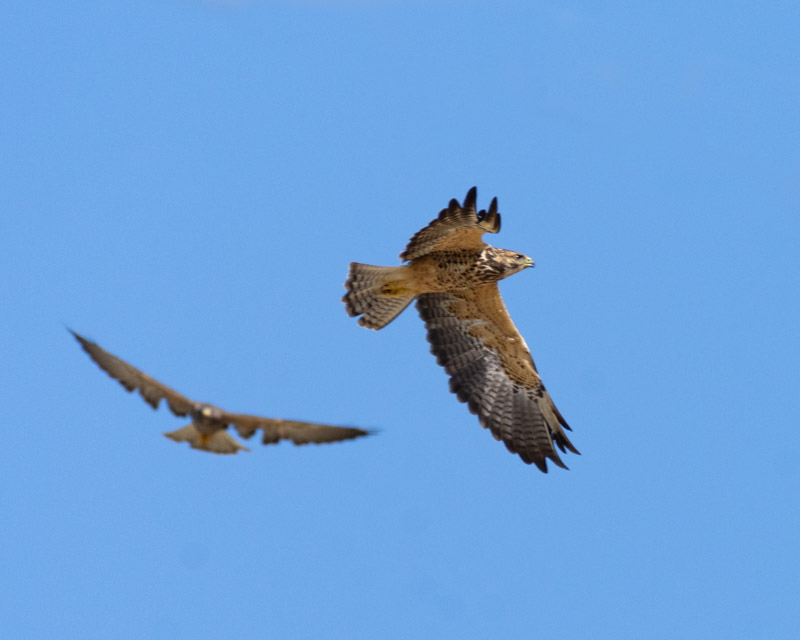
This adult looks a bit more like a ‘typical’ Swainson’s Hawk profile with light wing linings that contrast with the darker, blackish flight feathers. The long, pointed wings are prominent. This bird also has the nictitating membrane on its eye closed.
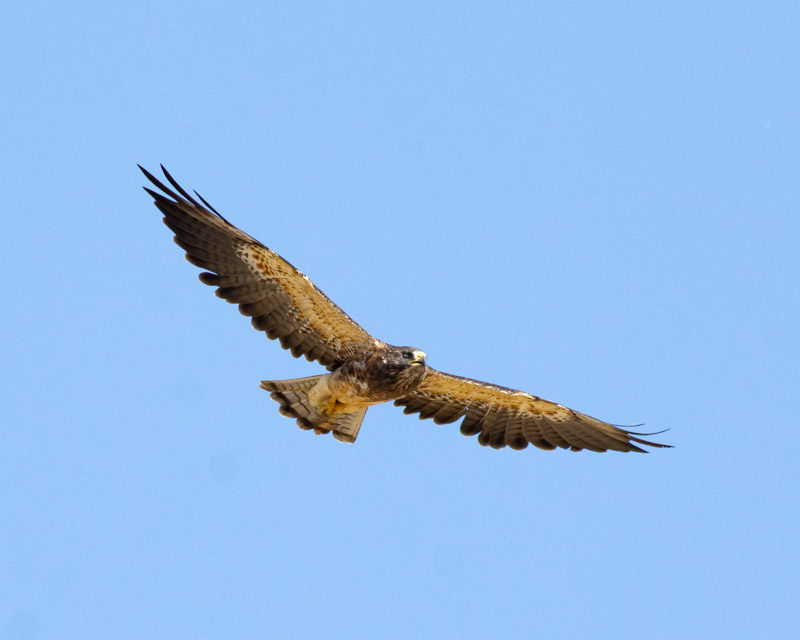
This bird is a light morph version and the white upper wing is very prominent. Its bib or hood is visible. This bird appears relaxed as it soars under a Common Raven, who seems to be creating a shadowed silhouette of the hawk. Note the raven’s rounded tail, its shorter, rounded wings and its long beak.
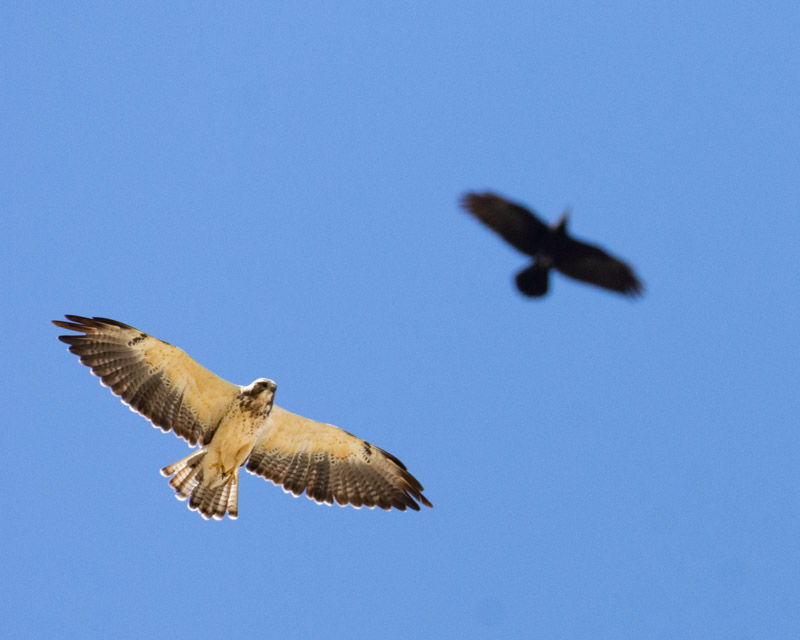
If you look closely, you can see that this Swainson’s Hawk lifted off with a small green snack in its talons. Swainson’s Hawks are opportunistic feeders who will eat mostly mammals during breeding season. They are famously known for their diets out of breeding season when they rely almost exclusively on insects. During their travels, they become a farmer’s best friend as they move through agricultural fields, eating all of the grasshoppers and insects in the fields. This is another individual whose white upper wings are apparent along with the dark hood.
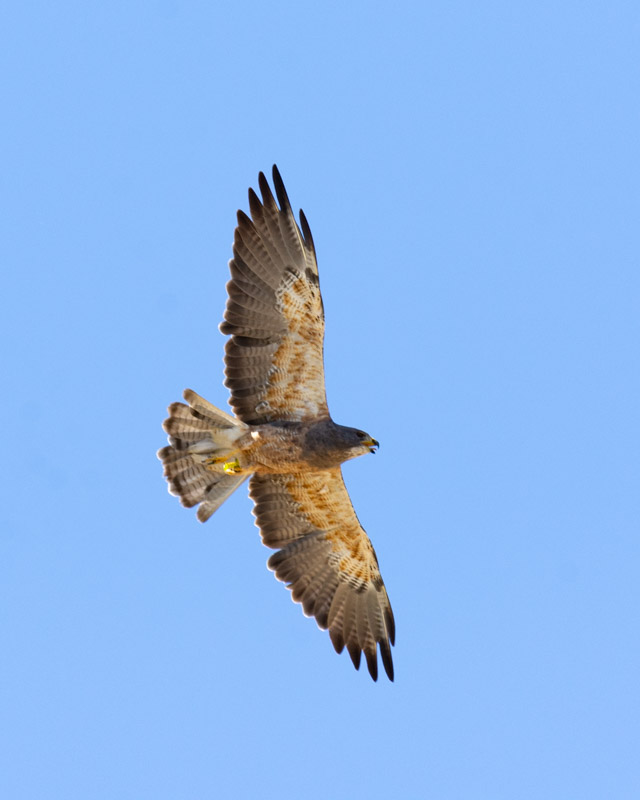
Almost all of the birds we saw that morning were far away in the fields or flying, after taking off from hidden perches in the thick cottonwoods lining the roads. We did come across one perched bird who had some kind of rodent prey in its talons. He watched us for a short while before flying off for a private spot to dine at.
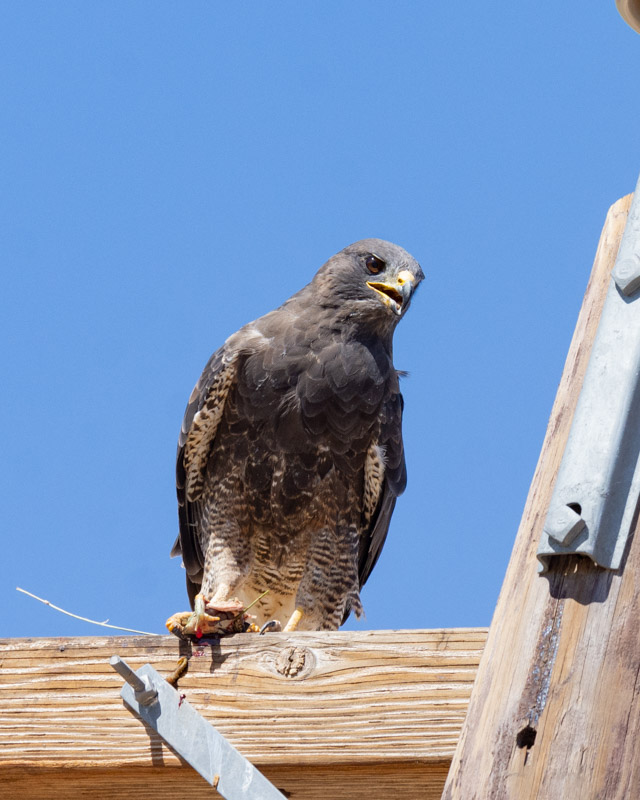
This is the only other perched Swainson’s Hawk we got a close look at. You can see how long its wings are, as the wingtips reach beyond the end of its tail.
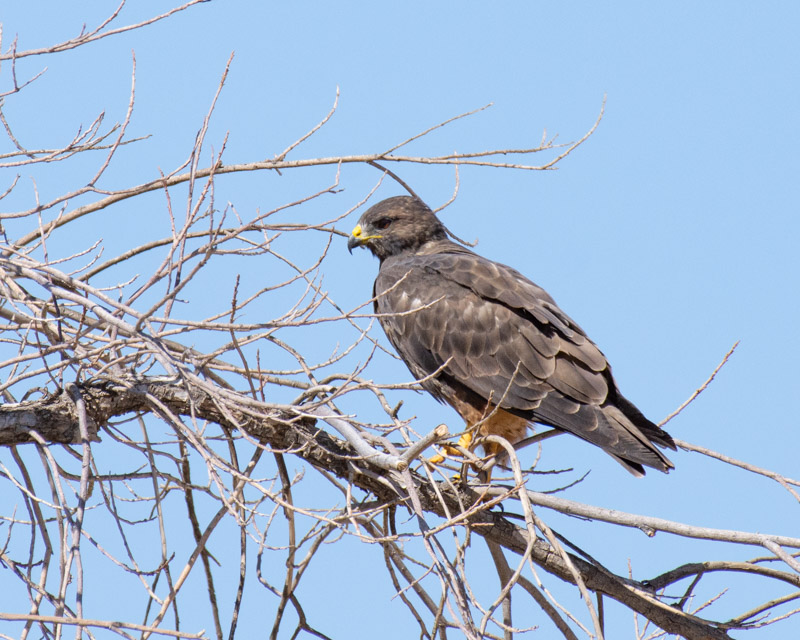
Another one flying with prey and missing some tail feathers.
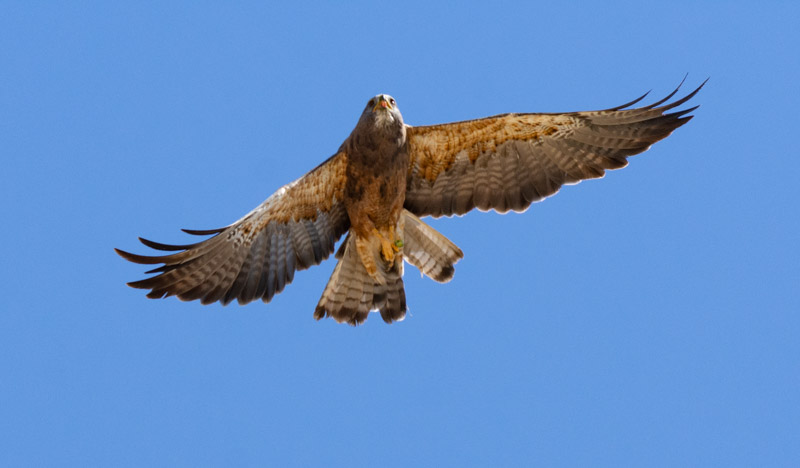
And yet another soaring Swainson’s with prey who is also short a few tail feathers.
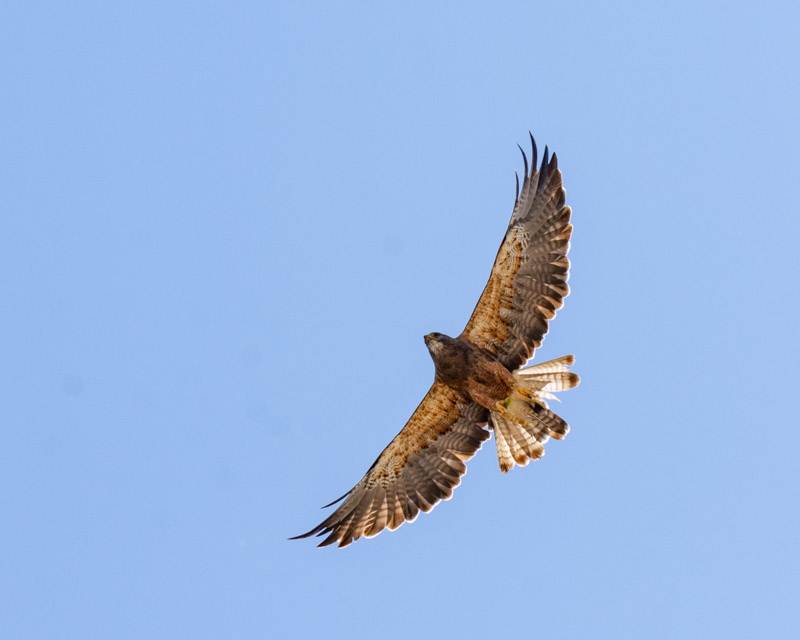
Soaring but looking right down at me.
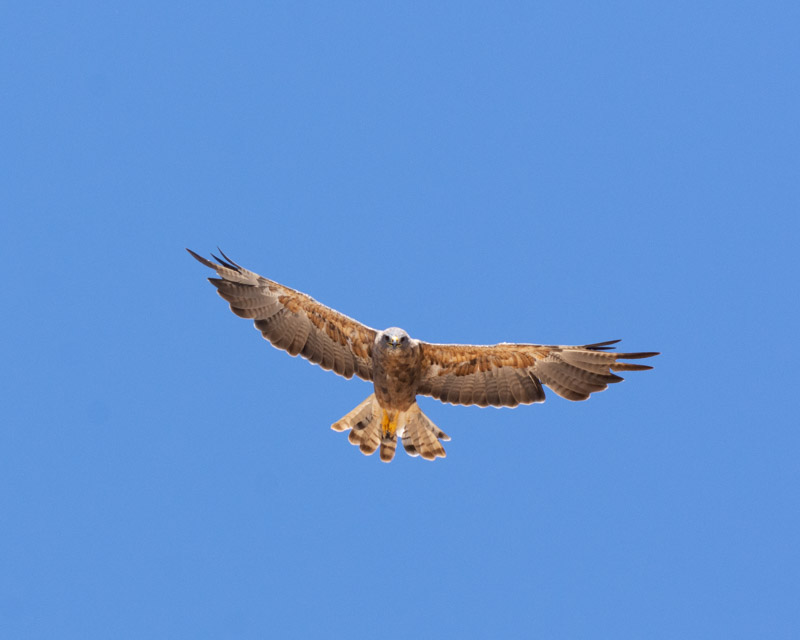
And the final Swainson’s Hawk. This one is showing the typical dark hood, the white upper wings and dark flight feathers, with long and pointed wings.
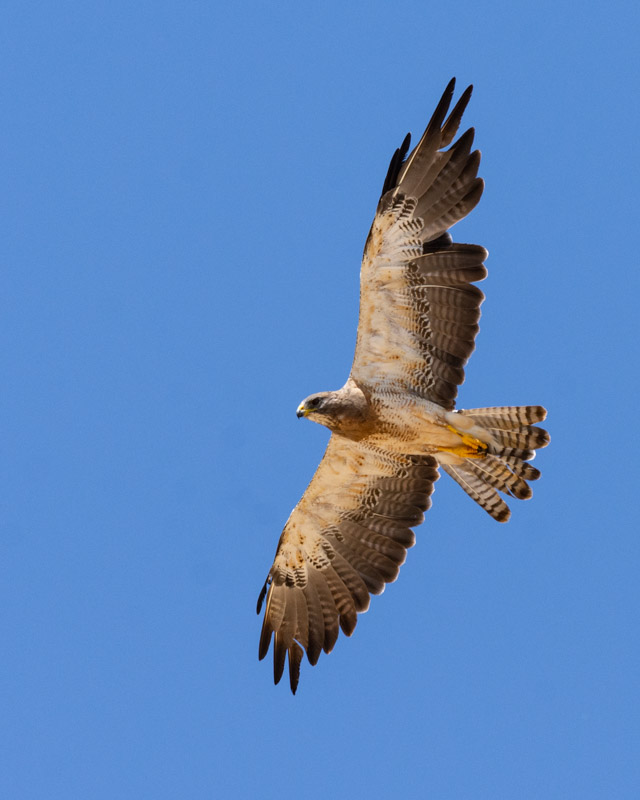
Return to Foothills Clusters Home
